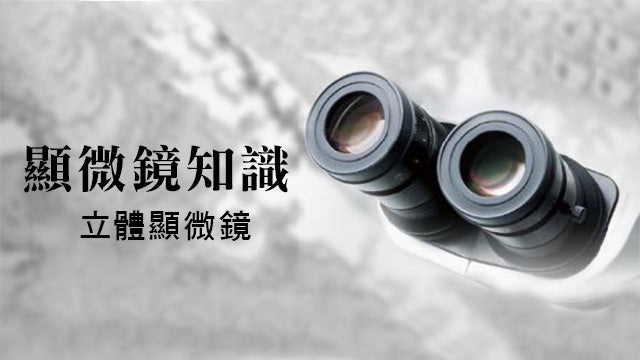
stereomicroscope
Share
"Stereomicroscope" is also called "solid microscope" and "dissecting microscope"
Different from the inverted imaging of a compound microscope, a stereomicroscope has separate left and right objective lenses and eyepieces, which independently produce upright and magnified images for the left and right eyes. Together with binocular observation and brain synthesis, a solid picture with a three-dimensional feel is produced.
Because the image is upright and has a three-dimensional effect, the position and movement direction of specimens, objects, and tools are the same as the image at the eyepiece. The operation is intuitive. It is often used as an auxiliary dissection in biological experiments, and is also called a "dissecting microscope."

Difference in perspective creates a sense of distance
Because of the slight difference in viewing angle, the images seen by the left and right eyes respectively can produce a sense of distance after being judged by the brain. Objects that are closer are located inward relative to both eyes. At this time, the object appears to the right to the left eye/to the left to the right eye. Objects that are farther away are closer to the center of the visual field of both eyes; infinity. Objects appear to be the same to both eyes, with no difference in viewing angles, and the brain uses this to judge objects as extremely far away.
The following three pictures briefly illustrate the generation of human three-dimensional perception.
(Attachment: Diagram of two eyes looking down)

(Attachment: Schematic diagram of binocular vision)

(Attachment: Schematic diagram of parallax between left and right eyes)

Principles of Stereo Microscope
After explaining human stereoscopic perception (the way of judging distance), next we have to look at the structure used to allow a stereomicroscope to produce images with a three-dimensional sense. The light from the left and right eyes of a stereomicroscope enters the eyes independently from the objective lens and eyepiece, taking advantage of the slight difference in the images of the left and right eyes to create a three-dimensional perception of objects. Therefore, a stereomicroscope "must" have two eyepieces on the left and right, and usually a pair of objective lenses (the picture below shows the objective lens set of a stereomicroscope, clockwise from directly below, they are 4x/1x/2x respectively).
(Picture: Paired objective lens groups of a stereomicroscope)

The following is a picture of the left and right eyepieces of a stereomicroscope actually taken using a mobile phone. Pay attention to the edges of the word "view" on the left and the word "finger" on the right. From this comparison picture, we can see the parallax of the left and right eyes of the stereomicroscope.
(Picture: Stereomicroscope eyepiece image)

application
The magnification of a normal stereomicroscope is not too high, the depth of field is deep, and the clear range in the field of view is large. At a higher magnification than a general magnifying glass, usually within 7 times to 100 times, people can easily perform through the stereo microscope. Extremely detailed work.
Biological applications include: biological anatomy, fermentation culture, aquatic research, breeding and breeding, tissue microscopy, insect observation, pest and disease analysis and control, etc. Daily life applications include: model assembly, miniature carving, art research, fine antique identification, identification and anti-counterfeiting, jewelry ore Other industrial applications include: dental mold making, metalworking microlaying, industrial quality control, production, soldering, printed circuit board inspection, welding defects, panel pixel defects, etc.
Stereo microscopes are extremely versatile. Because they use the difference in viewing angles between human eyes when observing objects to establish a sense of distance (a sense of three-dimensionality), it can also be regarded as a kind of bionic science, allowing humans to see a more detailed world and understand more details in their lives. many.
